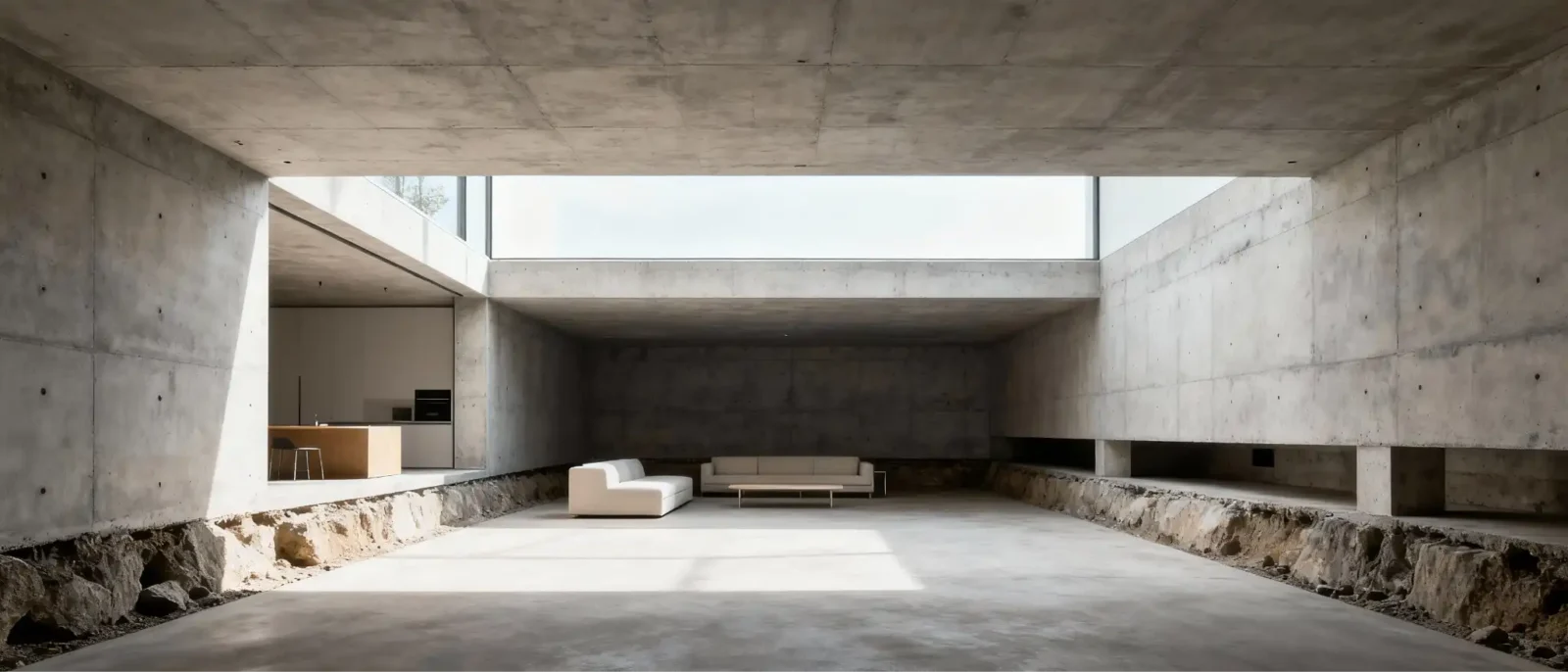- Home
- Articles
- Architectural Portfolio
- Architectral Presentation
- Inspirational Stories
- Architecture News
- Visualization
- BIM Industry
- Facade Design
- Parametric Design
- Career
- Landscape Architecture
- Construction
- Artificial Intelligence
- Sketching
- Design Softwares
- Diagrams
- Writing
- Architectural Tips
- Sustainability
- Courses
- Concept
- Technology
- History & Heritage
- Future of Architecture
- Guides & How-To
- Projects
- Interior Design
- Competitions
- Jobs
- Store
- Tools
- More
- Home
- Articles
- Architectural Portfolio
- Architectral Presentation
- Inspirational Stories
- Architecture News
- Visualization
- BIM Industry
- Facade Design
- Parametric Design
- Career
- Landscape Architecture
- Construction
- Artificial Intelligence
- Sketching
- Design Softwares
- Diagrams
- Writing
- Architectural Tips
- Sustainability
- Courses
- Concept
- Technology
- History & Heritage
- Future of Architecture
- Guides & How-To
- Projects
- Interior Design
- Competitions
- Jobs
- Store
- Tools
- More
DIY Double Glazing: How to Install It Yourself and Save on Energy Bills

Table of Contents
ToggleIntroduction: The Case for Energy-Efficient Windows
In an era of rising energy costs and growing environmental consciousness, making your home more energy-efficient is a smart move. One of the most significant sources of heat loss in a home is through single-pane windows, which can account for up to 18% of a building’s heat loss. Upgrading to double glazing is a proven solution to tackle this problem, dramatically reducing heat transfer and, consequently, your heating bills.
While professional double glazing installation can be costly and disruptive, a viable and much more affordable alternative exists: the DIY approach. Specifically, installing secondary double glazing kits is an effective, non-invasive method perfect for homeowners and even renters, especially those in period properties where replacing original windows isn’t an option.
This guide will walk you through the benefits of DIY double glazing, the tools you’ll need, and a step-by-step installation process to help you achieve a warmer, quieter, and more cost-effective home.
Benefits of Secondary Glazing
Secondary glazing works by adding an extra pane of glass or clear acrylic to the inside of your existing window frame, creating an insulating air gap. This trapped layer of still air acts as a thermal barrier.
Significant Energy Savings
The primary motivation for most homeowners is the financial benefit. By reducing heat loss through your windows by over 50% compared to single glazing, secondary glazing significantly lowers your reliance on your heating system. Customers commonly report a noticeable rise in room temperature and can often recover the cost of the kit over a couple of winters through energy savings. This reduction in energy consumption is a win for your wallet and the planet.
Other Key Advantages
- Noise Reduction: The additional layer and air gap dampen sound waves, providing a substantial barrier against external noise like traffic or busy streets, which is particularly beneficial in urban areas.
- Reduced Condensation: By keeping the inner surface of the window warmer, secondary glazing helps prevent the cold surface that attracts moisture, reducing the build-up of condensation, which can lead to mould and mildew.
- Preserving Character: Crucially, secondary glazing leaves your existing, original windows intact. This makes it the perfect solution for listed buildings or those with heritage features where aesthetic preservation is key.
- Affordability and Ease: It is significantly cheaper than replacing entire window units and is designed for easy, often non-drilling, installation that the average DIY enthusiast can handle. Investing in quality secondary double glazing kits will ensure you get a robust and effective solution.
What You’ll Need for the DIY Installation
The materials and tools required are minimal, especially if you opt for a magnetic acrylic kit, a popular and easy-to-use option.
Materials
- Secondary Glazing Kit: Typically includes a custom-cut clear acrylic or perspex sheet (thicker panels offer better sound and thermal benefits) and self-adhesive magnetic strips.
- Anti-static cleaning fluid and cloth (for the acrylic).
- Optional: Sill supports for larger, heavier panels.

Tools
- Tape Measure (Accurate measurements are paramount!)
- Craft Scissors or Utility Knife (to cut the magnetic strip).
- Pencil.
- Spirit Level (for alignment).
- A clean rag or cloth.
Step-by-Step Installation Guide (Magnetic Kits)
While exact steps may vary slightly depending on your specific kit, the general process for a magnetic DIY secondary glazing system is straightforward.
Step 1: Measure and Prepare
Measure the internal opening of your window frame accurately. Measure the width and height in at least three different places (top, middle, bottom/left, centre, right) and use the smallest measurement to ensure a snug fit. Order your acrylic panel slightly smaller than the opening (your kit provider will usually specify the exact allowance). Before installation, clean the existing window frame thoroughly to ensure the adhesive strips will bond effectively.
Step 2: Apply Magnetic Strips to the Panel
Take the acrylic panel (which should still have its protective film on) and carefully attach the first set of self-adhesive magnetic strips around its perimeter. Ensure the strips are precisely aligned and pressed firmly for a strong bond.
Step 3: “Mate” the Magnetic Strips
This is a crucial step for ensuring the magnets align correctly. Attach the second set of adhesive magnetic strips directly onto the first set that is already on the panel. The magnets will naturally align their polarity.

Step 4: Mount to the Window Frame
With a helper, or by carefully handling the panel yourself, peel the protective backing off the exposed adhesive strips (the second set). Carefully align the panel with your window frame and press it firmly into position, using a spirit level to ensure it is straight. The magnetic strips on the panel will now be stuck to the window frame.
Step 5: Final Clean-up and Checks
Once the panel is securely in place, remove the acrylic sheet, leaving the second set of magnetic strips stuck to the frame. Peel the protective film off the inside of the acrylic panel. Now, place the panel back onto the frame—the magnets will snap into place. Remove the final protective film, clean the new pane with an anti-static cloth and cleaner, and enjoy the immediate difference in warmth and quiet!
Conclusion: A Cost-Effective Home Improvement
DIY double glazing is an incredibly effective and accessible way to improve your home’s thermal efficiency, security, and soundproofing without the significant cost and upheaval of full window replacements. By taking the time to install a secondary glazing kit, you are making a smart, long-term investment that will quickly pay for itself through lower energy bills while simultaneously increasing the comfort of your living space. Start your DIY project today and enjoy a warmer, more peaceful home this winter.
illustrarch is your daily dose of architecture. Leading community designed for all lovers of illustration and #drawing.
Submit your architectural projects
Follow these steps for submission your project. Submission FormLatest Posts
The Vertical Revolution: How Basement Underpinning Creates Architectural Gold from Forgotten Spaces
Think about the last time you walked into a room with soaring...
Best Tools for Tracking Construction Labor Hours
Quick View of the Products Listed Best Overall: Workyard – Complete construction...
More Than a Gate: Designing a Secure and Stylish Home Entryway
A property’s entrance tells a story before a single guest steps inside....
Employer Liability and Smartphones: When Work Texts Cause Crashes
In today’s connected world, it’s nearly impossible to separate work from daily...












Leave a comment